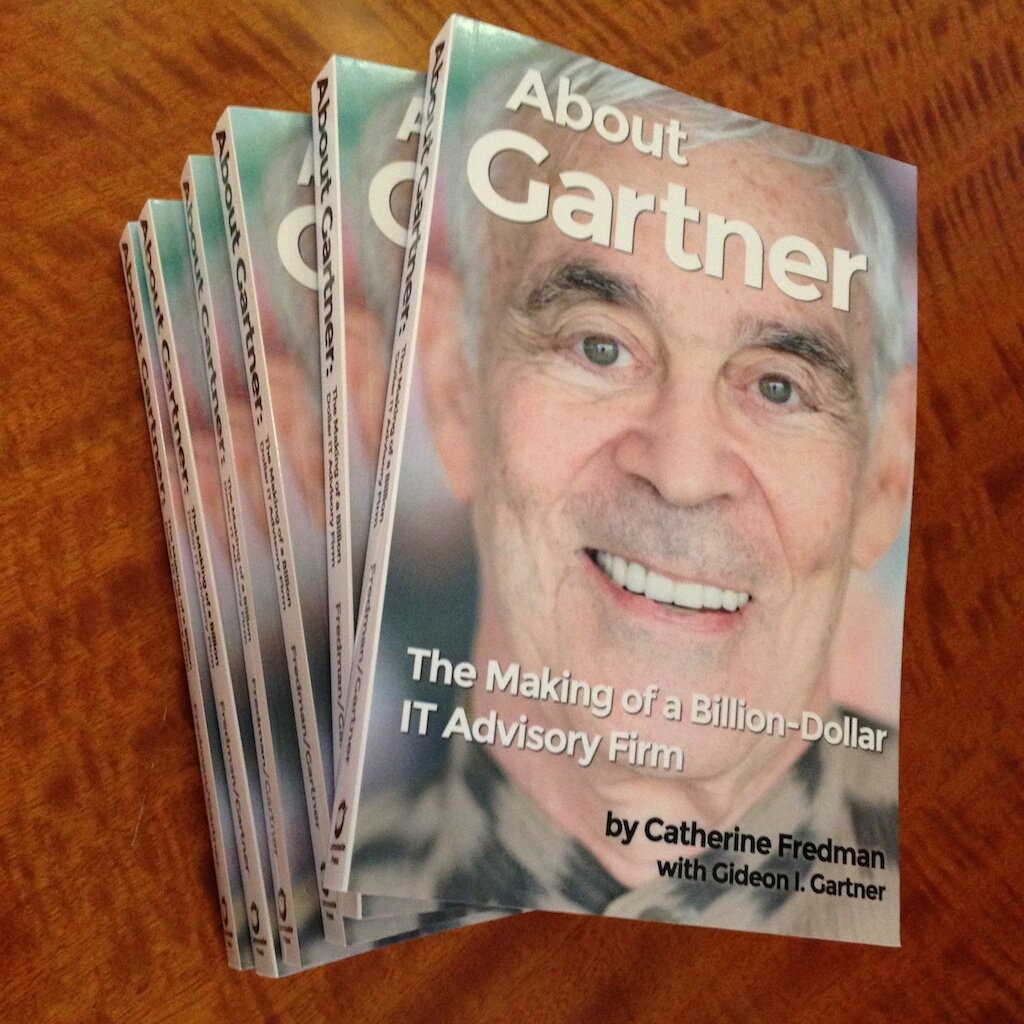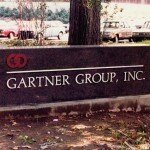IBM vs. Gartner During the 1980s, Part 3
 Here’s how the drama continued to unfold:
Here’s how the drama continued to unfold:
In early March 1993 I was shocked to receive a call followed by a personal visit in my office by two people associated with IBM: Tom Barr and Nicholas Katzenback. Tom Barr was Cravath Swaine & Moore’s most famous lawyer and was handling the entire IBM account. Nicholas Katzenbach is a Rhodes Scholar, former professor at Yale and the U. of Chicago, a former U.S. Attorney General, and now General Counsel for IBM!
Imagine how nervous I felt as Mr. Barr calmly and respectfully told me that copies of Gartner presentation charts were found stapled to IBM “Confidential-Do Not Copy” documents during discovery proceedings in the IBM vs. National Semiconductor Corp. lawsuit! This was one of two major lawsuits which IBM initiated in its efforts to control its Japanese competitors and their U.S. Partners. IBM apparently wished them to “cease and desist” from the design and production of “IBM Compatible” mainframes, since those lower-cost copies which were penetrating IBM’s major revenue source: its huge installed-base of large systems.
After some idle chatter, Tom said that we were not the subject of an investigation or the target of litigation, and “of course” IBM was skeptical that we were necessarily the source of this material. BUT, he asked me respectfully to look into this matter, and within 20 minutes, the two left to return to Armonk, IBM’s corporate HQ. I recall wondering why Mr. Katzenbach had come along; he had hardly said a word.
Wow! As soon as they left I huddled with David Stein my partner, and we instantly and simultaneously concluded what had transpired: The Gartner analyst who led our ILCM service (IBM Large Computer Machines) would more than sometimes entertain our Japanese clients from Fujitsu and Hitachi, the primary manufacturers of these huge IBM clones, and National Semi was their major semiconductor supplier. One of our conference rooms was near my office and David’s, I recalled I had been casually surprised by the size of each Japanese group, but most important, I knew that our analyst had a girlfriend who worked at in one of IBM’s major laboratories, in its education department! Q.E.D.?
We immediately walked into our analyst’s office and confronted him with the situation. He did not even attempt to refute our suspicions, and agreed to pack up at once and leave our offices, permanently! I should note that somewhat later we determined that “IBM Confidential” and “Do Not Copy” were the lowest forms of security control within the firm, compared with “IBM Secret”, “IBM Top Secret” (I don’t recall the other security terms), and that the source of the document was an IBM classroom where dozens of these documents were exchanged with few further security controls.
We watched our analyst leave, and of course notified IBM of our finding and the his firing. But still, IBM continued to harass us. We believed we were at the boundary of being sued despite IBM’s initial representations, as we suffered through constant negotiations and cost, with our new major attorneys who had been recommended by our board. Weil Gotshal’s Dick Gruenberger, with the active assistance of his firm’s famous chairman Ira Milstein, who would have to deal with the extremely tough Tom Barr. I believed we had a strong case that these were not trade secrets but with no trial we were nevertheless soon forced to a ‘consent settlement’ with IBM, a better result than being sued which would likely have bankrupted us. Yet, we did suffer what I considered a forced punishment, as follows:
We were given a detailed document as to IBM’s version of what it believed should be our rules of behavior which we had to distribute annually to all staff who had to read and sign it! Also, our lawyers Weil Gotshal had to commit to visiting us at the same time annually in order to review, face to face with all analysts, our various obligations with regard to IBM’s rights.
Third, the major item for me, was IBM’s applying what has been called in the trade a “snitch clause” whereby any offer by any outsider to provide information which might possibly be considered confidential, would have to be reported immediately to IBM counsel. This seemed ridiculous, if not onerous, but that was that. I assumed it was primarily to keep us on our toes.
In retrospect, this legal nightmare had caused us much agony, wasted time which hurt our productivity, and incurred huge legal expenses. In my view it was an unnecessary and vindictive action on IBM’s part, and which it should have known in the long-term might ironically hurt it more than helped! After all, we were a form of “the press”, which digs for protected content all the time, and who ever sues the press?
Read Part 1: “Know the Most About a Little”
Read Part 2: Trade-Secret Witch Hunt?
Read Part 4: Have You Spoken to Gideon Lately?







7 Comments